The direction taken by Photo CD is changing. Will it flourish?
by John Henshall.
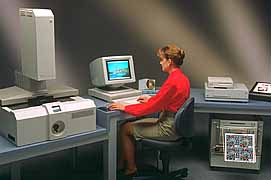
Photo CD is going professional - the Pro Photo Imaging Workstation with its 5 x 4 scanner and dye sublimation printer.

The first pro labs now have Professional Photo CD
installed, bringing PCD to every format up to 4x5 inches.
Professional Photo CD was an afterthought, however, when Kodak were persuaded
that PCD was a system with great professional potential. In desktop publishing,
Photo CD really has caught on: there is no doubt about Photo CD's capabilities
as a professional tool.
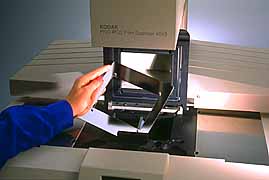
Photo CD was conceived and subsidised as an amateur tool, neatly linking
the best of silver halide to state-of-the-art digital. Yet there is no evidence
that Photo CD is capturing the public's imagination and revolutionising
the way amateurs view their photographs.
So is Photo CD as it was originally conceived dying? Worse still, is it
already as good as dead?
Last year I ruined the family holiday by having to fly back to London
from Bordeaux on business. Children do not understand the meaning of the
word recession.
So our holiday this year was in a Romany caravan in the Dordogne, pulled
by a beautiful white cart horse named Boule de Neige - Snowball. It was
my daughter Annelies' idea, her way of ensuring that I would be far away
from 'phones and electricity.Thank you, Annelies. I never realised that
following a cart horse's bottom around the French countryside could be so
much fun - apart from regular emissions of wind and a substance good for
gardens.
I bought a simple Fuji DL-35
camera for my nine year old daughter, Martien, and an even more simple Minolta
Memory Maker for my six year old son, Johnny. Yes, cameras which use film!
To say that they were excited and delighted is putting it mildly. Annelies,
twelve, has been a photographer since she was given a Brownie 127 by an
antique market stallholder in Bath at the age of three. She now uses an
Olympus AF-1 Twin.
It was
my daughter Annelies' idea, her way of ensuring that I would be far away
from 'phones and electricity.Thank you, Annelies. I never realised that
following a cart horse's bottom around the French countryside could be so
much fun - apart from regular emissions of wind and a substance good for
gardens.
I bought a simple Fuji DL-35
camera for my nine year old daughter, Martien, and an even more simple Minolta
Memory Maker for my six year old son, Johnny. Yes, cameras which use film!
To say that they were excited and delighted is putting it mildly. Annelies,
twelve, has been a photographer since she was given a Brownie 127 by an
antique market stallholder in Bath at the age of three. She now uses an
Olympus AF-1 Twin.
Back home, I announced that I would be taking Martien's and Johnny's films
in for processing and Photo CD.
"I don't want Photo CD," asserted Martien firmly, "I want
prints, so I can show them to my friends at school." Johnny was more
enthusiastic, "I'm going to have my pictures on computer. Yeah!"
but needed reassurance that he would also have prints - something which
would be under his control.
I took Martien's film into Dixons' Richmond, Surrey, high street store where
I asked for a Photo CD and 7 x 5 inch glossy prints. "Do we still do
Photo CD?" asked the assistant of one of her colleagues. "I don't
think so," he replied. "Yes, we do", offered a third, "only
we send them to Color Care now, not Kodak." I was told that the service
should take about two days.
Johnny's film went almost next door, to Boots, who have a thriving in-store
minilab. It was the day after the August Bank Holiday and they were in the
middle of a lunch time rush for their one hour service, busily explaining
to disgruntled clients, who had to return to work, why the one hour service
was taking seventy five minutes.
Yes, they did "do" Photo CDs. After a hunt for the pad - "we
don't get much call for this service yet, it's so new" - it took three
assistants to figure out how to fill in the Kodak form. Meanwhile, their
D+P queue was growing.
Annelies finished her film after the holiday. She was keen to have a Photo
CD. "It's neater and easier to store. You don't need thick photo albums."
But she also wanted prints to show to her friends. I took her film into
Teddington Photo Centre, a Kodak mini-lab. They were not fazed by my request,
having had "quite a few" requests for Photo CD. Perhaps the residents
of Teddington are more technologically advanced than those of Richmond?
Teddington Photo Centre even had a Photo CD mobile dangling from the ceiling.
Their Photo CD work is sent to Photo Services in Aylesbury. Do they, in
turn, send the work to Kodak's Wimbledon laboratory, I wondered?
Johnny's PCD came back first. We collected it from Boots on 11 September.
Total service time: eleven days. The Photo CD shows a "made" date
of 3 September. The prints were 6x4 glossy, not 7x5 as ordered. For the
disc and 37 exposures transferred, the total charge was £21.98. Johnny
was delighted with his prints, though at first indifferent about his Photo
CD.
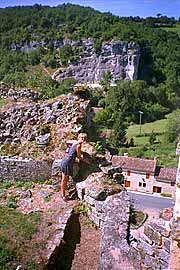
Martien's, taken into Dixons, took longer. After four days I telephoned
Dixons and was told that the order was ready. But then the assistant, Yasmin,
noticed that there was no Photo CD - just prints and the negatives. The
lab had not read the instructions. So, on 6 September Dixons sent it back
to Color Care. We collected the Photo CD on 18 September. Total service
time: eighteen days. This Photo CD shows a "made" date of 15 September.
Again, the prints were 6x4 glossy, not 7x5 as ordered. For the disc and
35 exposures transferred, the charge was £9.98. You have to add to
this the cost and considerable inconvenience of repeated telephone calls.
We were not charged the £4.49 D+P charge, possibly because of the mistake.
Had we, the total charge would have been only £14.47. Without the very
helpful Yasmin to monitor progress, this order would have been a nightmare.
Annelies' PCD came back to Teddington Photo Centre on 21 September. Total
service time: seventeen days. Teddington Photo Centre's work is sent to
Kodak's Wimbledon laboratory via Photo Services in Aylesbury. The assistant
at Teddington told me that, although they are a Kodak mini lab, they were
not allowed to send Photo CD work direct to Kodak. Someone even 'phoned
to tell me that I had been incorrectly advised: the turnaround time for
Photo CD was one month - but she 'phoned back the next day to say that the
order would be ready in four days. 'They' were not, 'it' was: again someone
failed to read the instructions and, instead of putting one of my films
on a separate disc, added it to hers. Annelies was not impressed: she doesn't
want one of her father's films on her disc. However, this was the only laboratory
to supply glossy 7x5 prints as requested. The cost, for a new disc and 54
scans, was £17.10. Pro-rata, this works out at £12.84 for Annelies'
35 exposures. All prices include VAT.
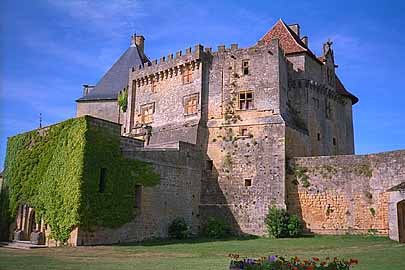
By way of comparison, I posted my holiday films direct to Kodak's Wimbledon
laboratory. They were ready in five days.
The high street stores and their intermediate laboratories were the main
reasons why my family's Photo CDs became such an ordeal. Who wants to wait
two or three weeks for their prints to come back on a Photo CD when they
can have regular photographic prints inside an hour? Digital imaging is
supposed to speed up photography, not slow it down. Digital imaging should
make photography easier and cheaper, to entice users away from conventional
methods.
Taking into account the shop assistants' time chasing up orders which go
wrong and ringing customers back to advise them of progress, the high street
stores must be making a loss on every order. Indeed, I would not be surprised
if they dropped the Photo CD service altogether. But this might not be so
bad as it first seems. Kodak should prepare pre-paid mailers, for sale in
all the major stores, for sending orders direct to their laboratories in
Wimbledon and Rugeley. This would speed up the service dramatically and
cut out the middle men laboratories, time spent shunting orders around between
them and the mistakes they make.
Worst of all, public awareness of Photo CD as a product or service is minimal.
Getting discs made is far too much of a drama. This comes down to abysmal
marketing. It might also come down to incorrect assumptions about how consumers
want to view their snaps. Many snappers actually prefer thumbing through
packets of en-prints in the office or pub, others enjoy the social event
of leafing through a dog-eared family album curled up on the sofa together.
Photo CD is another Kodak disc disaster in the making and rapid action is
needed to prevent this superb technological development failing.
Once we got them all back, the PCDs were a big hit with the family. Gathered
round the television, watching all our own images, was a hilarious social
event. The 2x magnification facility gave me a great opportunity to teach
a few basic lessons in framing and show how 'cropping in' close gives greater
impact.
The Photo CD licence should have been given away to every hi-fi manufacturer
in the far east. The logo should now be as familiar as Dolby or NiCam. Every
new audio CD player, from hi-fi separate to integrated system, should be
Photo CD compatible. No one buys Kodak hi-fi but they do buy Sony and Technics.
That's where the chip needs to be: in every CD player, with a Scart socket
on the back in addition to normal audio outputs, just waiting to be used,
without a big deal. There is nothing to be gained from being protective
and pretentious about Photo CD. It needs to reach the public before it is
too late.
Professional use was an afterthought. The reality is that professionals
have been quick to recognise the phenomenal facilities that PCD offers at
bargain prices. One hundred 35mm transparencies transferred to Pro PCD would
cost only £50 through the 'amateur' service, but double that or more
at a pro lab. It's a little like the difference between machine printing
and hand printing, though many professional users are satisfied with the
'amateur' service because digital colour correction and manipulation in
programs such as EFIcolor Cachet can quickly rectify most mini-lab-type
mistakes later. New software at present under development will make this
even easier in the future.
Plans to introduce a 'two-tier' service - high quality individual digital
equivalents of 'hand prints' for special work and sizes greater than 35mm,
or machine-type bulk transfers of 35mm films and transparencies - should
address the difference by bringing a choice of service to the professional.
At the end of the day, only you can decide whether your pictures are printed
to your liking. 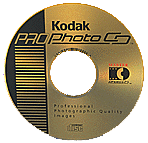 At Geneva airport
recently, a colleague pointed out that PCD players were being heavily discounted
in the duty free shop. When the Swiss offer a discount, you know there must
be a problem! There must be warehouses full of unsold PCD players. Sell
some of them to professional photographers for £95 each to get them
started in digital imaging: domestic PCD players are ideal as 'electronic
lightboxes' and, if nothing else, they could be used to play mood music
audio CDs in the studio. Better still, why not put together a complete PCD
countertop display package solution of PCD player, monitor and transfer
of the photographers' portfolio onto disc all for a package price of £450.
That should be most attractive to photographic studios.
At Geneva airport
recently, a colleague pointed out that PCD players were being heavily discounted
in the duty free shop. When the Swiss offer a discount, you know there must
be a problem! There must be warehouses full of unsold PCD players. Sell
some of them to professional photographers for £95 each to get them
started in digital imaging: domestic PCD players are ideal as 'electronic
lightboxes' and, if nothing else, they could be used to play mood music
audio CDs in the studio. Better still, why not put together a complete PCD
countertop display package solution of PCD player, monitor and transfer
of the photographers' portfolio onto disc all for a package price of £450.
That should be most attractive to photographic studios.
If, after reading this, you have the impression that I am 'Frustrated of
Brentford' you'd be right. Success in the amateur market is essential to
the well being of Photo CD. Professional users will be the losers if PCD
is allowed to wither, or to be priced out of everyday use.
Responsibility for Photo CD is shared by three divisions: consumer, graphics
and professional imaging. The consumer side has failed, while the professional
side has explored every possible application with imagination and drive.
Kodak need to get their act together quickly now, making the whole of Photo
CD the responsibility of just one of its divisions. I have no doubt which
division I would entrust with the task of saving PCD. Let Photo CD really
"go professional" before it is too late.